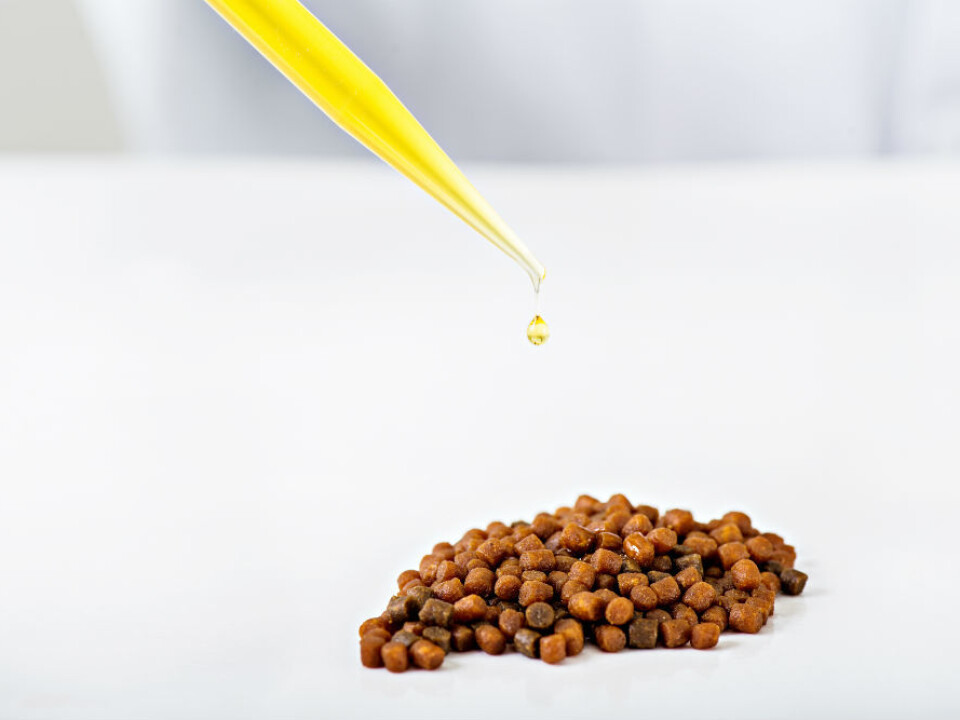This article was produced and financed by Nofima The Norwegian Institute of Food, Fisheries and Aquaculture Research

Salmon will have to make do with less omega-3
Omega-3 is in short supply and must be distributed wisely. Farmed salmon is one of the omega-3 lovers who now have less omega-3 in their diet than before. The question scientists are asking is how little marine omega-3 farmed salmon can cope with.
There is in fact a mismatch between how much fish the authorities allow us to catch from the oceans and how much the growing number of people on Earth wants. Demand is now far greater than the supply, which means that the oil has to spread very thinly over the world's serving platter.
Fish from the sea is by far the most important source of omega-3 oil. It is used, among other things, in feed for fish and animals, and increasingly in health food.
There are other sources of marine omega-3, but so far none in such large volumes that it really makes a difference. For aquaculture, this represents a problem. The industry reports that the shortage of omega-3 is one of the biggest long-term obstacles when it comes to industrial growth.
The shortage has resulted in less omega-3 oil in salmon fillets than before.
Like a health pill for fish

"The marine omega-3 content in salmon fillets has declined in recent years, but farmed salmon still contains enough to be an important source of marine omega-3 in our diet," according to scientist and project manager Nini Sissener of the National Institute of Nutrition and Seafood Research in Norway (NIFES).
However, for the fish itself, little omega-3 can be a health risk. Salmon have a need for the long omega-3 fatty acids EPA and DHA in order to maintain good health. These are known to have a role in the development of vision and for good growth and they are also essential for the immune system.
Humans can compensate for low omega-3 intake with dietary supplements. However, for fish there is no such compensation. It eats the feed it's served, and it's the fish farmer's reponsibility for making sure that the fish gets a diet that is good enough to ensure that the fish is healthy. Research shows us that omega-3 is a pure health pill for fish as well.
Nevertheless, since omega-3 is scarce in the market, it is preferable not to use more in feed than is necessary. In general, the authorities, researchers and breeders agree on this. This is a topic that is the subject of much research.
Risks associated with a shortage

The food research institute Nofima and NIFES have studied all available data concerning what should be a safe low marine omega-3 content in feed for farmed salmon, and what is, at the same time, adequate to ensure that the fish is healthy.
The results of this study are now presented in a new report.
"There is a lot that has to be in place before we can say for certain how little omega-3 is safe for commercial production of farmed salmon," says Bente Ruyter, senior scientist at Nofima.
What scientists do know is that there must be more than 1 percent marine omega-3 in feed under ideal farming conditions. In land-based tanks with seawater, long-term experiments show that it is safe for the salmon to have over 1 percent marine omega-3 in the feed, while the situation is less clear when it comes to salmon in cages at sea.

So far, long-term tests in cages at sea show that 1.6 percent omega-3 or more does not result in any growth reduction or survival.
"In the sea, there are varying environmental conditions that allow several factors that have an impact on the salmon's need for marine omega-3. That means that even if one level can be sufficient for the fish under good farming conditions, the fish may need more omega-3 under demanding environmental conditions," says Ruyter.
The content in today’s commercial feeds varies, but all have well over 1 percent.
Nofima and NIFES have completed a number of tests on salmon at sea where they have tested various levels and studied the consequences of too little omega-3.
It would appear that the consequences of a lack of omega-3 are that the salmon are less robust and more prone to developing viral diseases. The scientists also know that the composition of the fat in the diet affects how the fat is distributed in the salmon’s body, and that it can affect the course of the disease during viral infections. The ultimate consequence of these effects is that the salmon's overall health deteriorates and fewer fish survive life in farming.
Scientists know a great deal about the risk relating to giving salmon too little omega-3. But how the salmon absorbs, converts and stores omega-3 depends on the biology and the environment in which it lives. This varies, and it is therefore difficult to set a universal need.
We need a better understanding of interaction
In parallel with this work, an intense hunt is going on for additional sources of marine omega-3 that can supply the world with this essential nutrient. Yeasts, algae and breeding of salmon’s own ability to convert fatty acids from plants to marine omega-3 can help to supply our food basket with more omega-3 in the future.
Among the things that scientists need to know more about is the course of viral diseases when there is little omega-3 in the feed. They need to know more about how the interaction between low omega-3 and fat in the liver affects the immune system.
There is a clear need for better understanding of the mechanisms of uptake, conversion and storage of the antioxidant astaxanthin, which gives colour to the fillet, and a better understanding of the interaction between environment, stress and feed.
And the scientists need to know more about how well the salmon can stand various types of stress, when they get a lot of omega-6 from plants instead of marine omega-3.
"We have started a deep study of this subject and still have a long way to go," Ruyter adds.






























